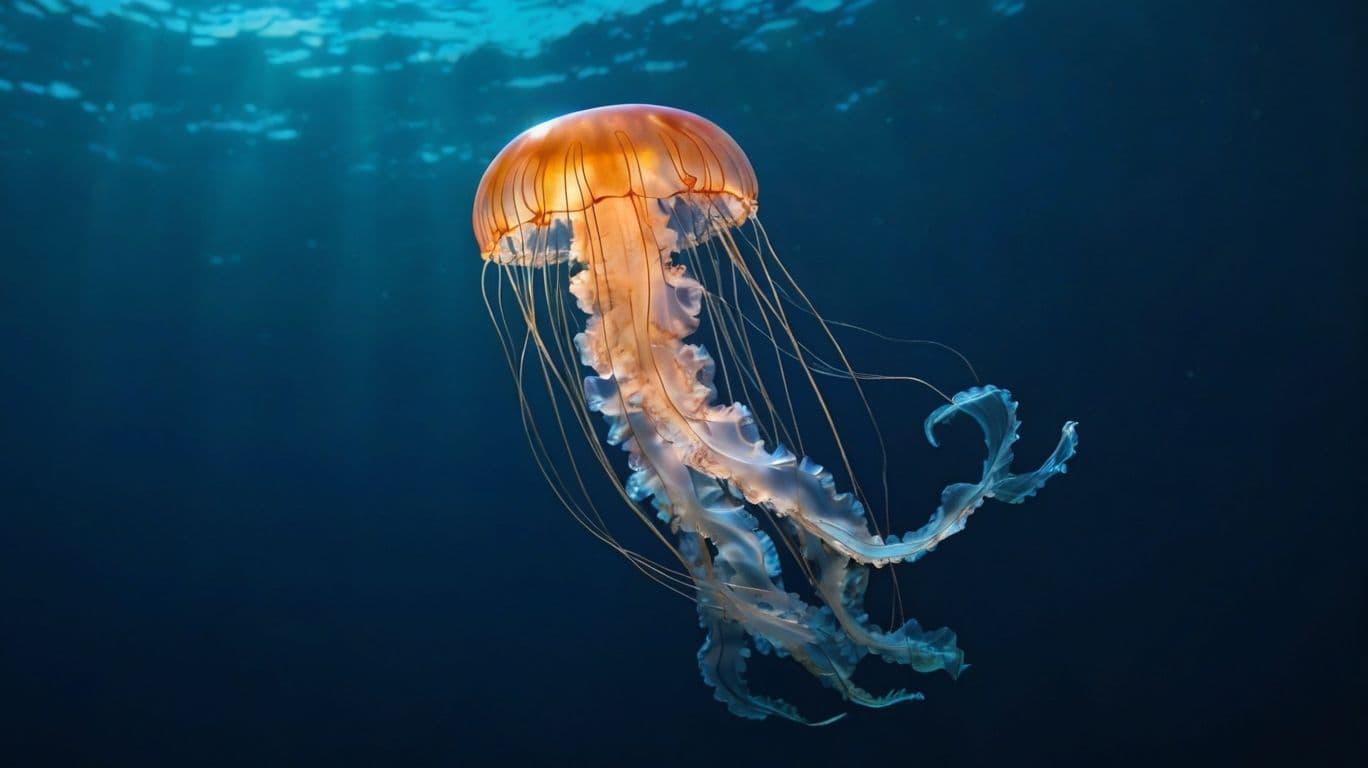Sounds like science fiction, right? A creature that technically doesn’t have to die?
But it’s real. Found in oceans around the world, this tiny, translucent jellyfish — barely the size of a pinky nail — has a biological trick so wild, scientists are still trying to understand it:
It can reverse its aging process and start life over again.
Yes. Like hitting a reset button… on life itself.
🌊 The Basics: What Is
Turritopsis dohrnii ?
Turritopsis dohrnii is a hydrozoan — a type of jellyfish with a complex, two-stage life cycle:
- Polyp stage – a stationary, flower-like phase attached to surfaces.
- Medusa stage – the free-swimming jellyfish form we recognize.
Most jellyfish go from polyp → medusa → reproduction → death. But Turritopsis? It throws the rulebook out.

Credit: https://teara.govt.nz
When stressed — whether from aging, physical damage, or environmental threats — it can revert from medusa back to polyp, restarting its life.
🔁 Biological Reincarnation
Imagine living your adult life, getting old or injured… and instead of dying, your body regenerates backwards into a baby version of yourself — without losing your DNA.
This reversal is called transdifferentiation — a rare process where one type of cell turns into another. It’s like turning a skin cell back into a stem cell, then rebuilding your body from scratch.
Humans? We can’t do that.
Salamanders can regrow limbs. Starfish can regrow arms.
But this jellyfish?
It can regrow its entire life.
Over and over again.
🧪 What This Means for Science
Biologists are fascinated by Turritopsis dohrnii not because it’s a threat to live forever in your local aquarium — but because it may hold clues to human aging, regenerative medicine, and cell plasticity.
If we can learn how this jellyfish reprograms its cells so effectively:
- Could we reverse age-related diseases?
- Could we regenerate damaged tissues?
- Could aging — at the cellular level — be paused or slowed?
The answers aren’t there yet. But the jellyfish gives researchers a rare natural model for biological immortality — a mystery that may impact human health decades from now.
🌍 Why Haven’t They Taken Over the Oceans?
Here’s the twist: even though these jellyfish can reset their life cycle, they’re still vulnerable to:
- Predators
- Disease
- Harsh environments
So while they can technically live forever, in practice? Most die like everything else.
Immortality isn’t immunity.
But a few have been observed regenerating multiple times, which is already enough to label this creature as functionally biologically immortal — even if it rarely lives forever in the wild.
🔮 A Thought Experiment
What if humans could do this?
What if, instead of aging, your body simply rewound — not as memory loss or decay, but as a rebirth? You wouldn’t grow old. You’d just… start again. Still you, but new. Again and again.
Would that be a gift?
Or would it be a curse?
It’s the kind of science that brushes up against philosophy — and Turritopsis dohrnii floats quietly in that gap, unaware of the chaos it causes in our curiosity.



